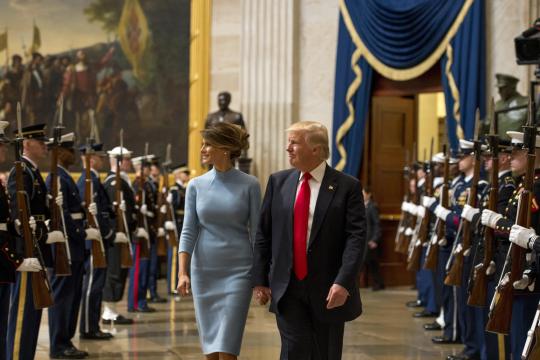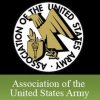
Yellow Ribbon America News Desk:
DoD News, Defense Media Activity
WASHINGTON, June 18, 2017 — The response of the crew of the severely damaged USS Fitzgerald “was swift and effective, and I want to point out — as we stand by the ship — how proud I am of them,” Navy Vice Adm. Joseph P. Aucoin, commander of the U.S. 7th Fleet, said today at a press conference in front of the stricken ship that’s now moored in Yokosuka, Japan.
The U.S. Navy Arleigh Burke-class guided missile destroyer USS Fitzgerald collided with the Philippine-flagged merchant vessel ACX Crystal in the Philippine Sea at approximately 2:30 a.m. local time, June 17, while operating about 64 miles southwest of Yokosuka, Japan, according to U.S. 7th Fleet news releases.
The Fitzgerald was able to return to its home port at Yokosuka under its own power aided by tug boats about 16 hours after the collision, according to a release.
Extensive Damage, Flooding
The Fitzgerald experienced extensive damage and flooding after the collision, Aucoin said in a news release issued today. The damage, he added, included a significant impact under the ship’s pilothouse on the starboard, or right, side and a large puncture below the ship’s waterline, opening the hull to the sea.
The ship, he continued, experienced rapid flooding of three large compartments that included a machinery room and two berthing areas for the ship’s 116-member crew.
Aucoin said the Fitzgerald’s commanding officer’s cabin was also directly hit, trapping Navy Cmdr. Bryce Benson, the commander, inside. Benson is one of three injured sailors who were transferred by helicopter to U.S. Naval Hospital Yokosuka for treatment after the collision.
All three patients are alert and under observation at the hospital, he said.
Thanks Japanese for Assistance
Shortly after the collision the U.S. made a request for support from the Japanese Coast Guard, which was the first on scene, according to a release.
Several U.S. Navy aircraft, as well as Japanese Coast Guard and Japan Maritime Self-Defense Force helicopters, ships and aircraft were deployed to render assistance to the Fitzgerald, a release said.
The Japan Maritime Self-Defense Force ships JS Ohnami, JS Hamagiri and JS Enshu were sent to join the JCG ships Izanami and Kano, according to a release. The U.S. Navy Arleigh Burke-class guided missile destroyer USS Dewey served as an escort for the Fitzgerald and has also returned to Yokosuka.
The admiral expressed his “most heartfelt appreciation to our Japanese allies for their swift support and assistance.”
Praises Crew’s ‘Heroic Efforts’
At today’s press conference in Yokosuka, Aucoin saluted the Fitzgerald crew’s “heroic efforts” that prevented the flooding from spreading, which could have caused the ship to founder or sink.
The crew, he continued, navigated the Fitzgerald into one of the busiest ports in the world with a magnetic compass and backup navigation equipment. One of two of the ship’s shafts became locked, he added.
“Because of the tireless damage control efforts of a resolute and courageous team, the ship was able to make its way back to port safely on its own power last evening,” Aucoin said in the release.
“The Fitzgerald crew responded professionally as all sailors are expected to fight the damage sustained to their ship. They are known as the “Fighting Fitz,” and the crew lived up to that name,” the admiral added.
Navy Finds ‘A Number’ of Missing Fitzgerald Sailors
Seven Fitzgerald sailors were reported unaccounted for after the collision, and the Japanese Coast Guard launched a search effort, according a release.
After the Fitzgerald returned to its home port in Yokosuka, search-and-rescue crews gained access to the ship’s spaces that were damaged during the collision, according to a release.
At the press conference, Aucoin said the Navy “has found the remains of a number of our missing shipmates.”
He added, “Our deepest sympathies are with the families of these sailors. Out of concern for the families and the notification process, I will decline to state how many we have found at this time. We owe that to the families and friends of these shipmates and hope you can respect this process.”
The sailors’ remains were transferred to Naval Hospital Yokosuka, Aucoin said, noting the “families are being notified and will be provided the support they need at this difficult time. Please keep them in your thoughts are prayers.”
He said the names of the deceased will be released pending notification of next of kin.
In a Twitter message issued yesterday, President Donald J. Trump said his “thoughts and prayers [are] with the sailors of the USS Fitzgerald and their families. Thank you to our Japanese allies for their assistance.”
Investigations
Aucoin said he’s initiating a Judge Advocate General Manual investigation into the collision, and that he’ll appoint a flag officer to lead that investigation.
There will also be a safety investigation, he added.
“We owe it to our families and the Navy to understand what happened,” Aucoin said.
The U.S. Coast Guard is slated to take the lead on the marine casualty investigation, he said.
More information on any further investigations will be forthcoming, the admiral said.
“I will not speculate on how long these investigations will last,” Aucoin added.
U.S. Navy Vice Adm. Joseph P. Aucoin, commander of the U.S. 7th Fleet, speaks to members of the press about the Arleigh Burke-class guided-missile destroyer USS Fitzgerald during a press conference in Yokosuka, Japan, June 18, 2017. The Fitzgerald suffered severe damage in its June 17 collision with a Philippine-flagged merchant ship, but returned to Fleet Activities Yokosuka under its own power. The incident is currently under investigation. U.S. Navy photo by Petty Officer 1st Class Peter Burghart






























